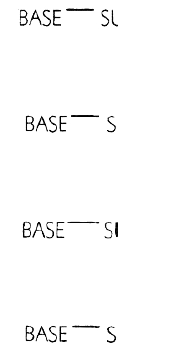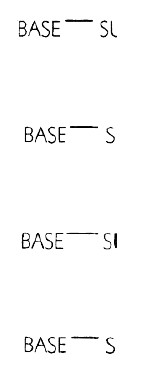XNA is a laboratory - made nucleic acid made of nucleotides in which one component has been replaced by chemical X. The chemical X is not found in nature. The part of the molecule responsible for coding is not changed . Which organic component of a DNA or RNA nucleotide has been replaced by X ?
Purine base
Phosphate group
Five - carbon sugar
Pyrimidine base
The correct Answer is:C
To solve the question regarding the laboratory-made nucleic acid XNA, we need to analyze the components of a nucleotide and determine which organic component has been replaced by the chemical X.
1. Understand the Structure of Nucleotides:
- A nucleotide consists of three main components: a nitrogenous base, a pentose sugar, and a phosphate group.
- The nitrogenous bases can be classified into purines (adenine and guanine) and pyrimidines (cytosine, thymine, and uracil).
2. Identify the Components of DNA and RNA:
- In DNA, the pentose sugar is deoxyribose, while in RNA, it is ribose.
- The nitrogenous bases remain the same in both DNA and RNA, except for thymine in DNA, which is replaced by uracil in RNA.
3. Analyze the Information Given:
- The question states that the part of the molecule responsible for coding is not changed. This indicates that the nitrogenous base, which carries the genetic information, remains the same.
- The chemical X is not found in nature, suggesting that it is a synthetic replacement.
4. Determine Which Component is Replaced:
- Since the nitrogenous base is unchanged, we can eliminate it as the component that has been replaced.
- The phosphate group is not considered an organic compound, as it does not contain carbon in the same way sugars and bases do. Therefore, it cannot be replaced by chemical X.
- This leaves the pentose sugar as the only component that could be replaced.
5. Conclusion:
- The chemical X has replaced the pentose sugar in the nucleotide, making it the organic component that has been substituted in XNA.
Final Answer:
The organic component of a DNA or RNA nucleotide that has been replaced by chemical X is the pentose sugar.
---
- A nucleotide consists of three main components: a nitrogenous base, a pentose sugar, and a phosphate group.
- The nitrogenous bases can be classified into purines (adenine and guanine) and pyrimidines (cytosine, thymine, and uracil).
- In DNA, the pentose sugar is deoxyribose, while in RNA, it is ribose.
- The nitrogenous bases remain the same in both DNA and RNA, except for thymine in DNA, which is replaced by uracil in RNA.
- The question states that the part of the molecule responsible for coding is not changed. This indicates that the nitrogenous base, which carries the genetic information, remains the same.
- The chemical X is not found in nature, suggesting that it is a synthetic replacement.
- Since the nitrogenous base is unchanged, we can eliminate it as the component that has been replaced.
- The phosphate group is not considered an organic compound, as it does not contain carbon in the same way sugars and bases do. Therefore, it cannot be replaced by chemical X.
- This leaves the pentose sugar as the only component that could be replaced.
- The chemical X has replaced the pentose sugar in the nucleotide, making it the organic component that has been substituted in XNA.
The organic component of a DNA or RNA nucleotide that has been replaced by chemical X is the pentose sugar.
Topper's Solved these Questions
Similar Questions
Knowledge Check
A salt 'X' has a positive radical in which the metal has electronic configuration 2, 8, 8, 2. The negative radical is formed from acid used in soft drinks. One molecule of the salt 'x' reacts with one molecule of base. Predict the formula of the salt 'x'.
AMg(HCO3)2BCa(HCO3)2CCaCO3DMgCO3A homopolymer has only one type of building block called monomer repeated 'n' number of times. A heteropolymer has more than one type of monomer. Proteins are heteropolymers made of amino acids. While a nucleic acid like DNA or RNA is made of only 4 types of nucleotide monomers, proteins are made of
A20 types of monomersB40 types of monomersC3 types of monomerDonly one type of monomer
A student has been collecting silver coins and copper coins. One day she observed a black coating on silver coins and a green coating on copper coins. Which chemical phenomenon is responsible for these coatings ? Write the chemical names of black and green coatings ?
View SolutionA student has been collecting silver coins and copper coins. One day she observed a black coating on silver coins and a green coating on copper coins. Which chemical phenomenon is responsible for these coatings ? Write the chemical names of black and green coatings ?
View SolutionInformation about protein synthesis is stored in the DNA. Proteins are synthesized by DNA through RNA. This is also known as the central dogma of life. The nucleotide sequences of the mRNA produced are complementary to the DNA strand that is uded as the template for synthesis. This process of synthesis of RNA from DNA is known as transcription. The code for each amino acid consists of three nucleotides (triplet codon) that are present on the mRNA. The tRNA has an anticodon sequence complementary to the cofon on the mRNA. During translation, the code on mRNA is read nad respective amino acids brought by tRNA are joined together by peptide bonds. Based on the given paragraph, answer the followig question:
i. If 3'-AACGT-5' is a sequence of the template DNA strand, what would be the nucleotide sequence of the corresponding mRNA synthesized from it?
ii. What is the difference in nitrogeneous bases of DNA and RNA?
iii. Which enzyme woud be required for the synthesis of RNA from DNA during transcription?
iv. How many amino acids can the following mRNA sequence code for ?
5'-UUCAGCCGUGUCAUU-3'
v. What is the function of mRNA in translation?
View SolutionRead the passage given below and answer the question:
EVIDENCE FOR THE FIBROUS NATURE OF DNA
The basic chemical formula of DNA is now well established. As shown in Figure 1 it consists of a very long chain, the backbone of which is made up of alternate sugar and phosphate groups, joined together in regular 3' 5' phosphate di-ester linkages. To each sugar is attached a nitrogenous base, only four different kinds of which are commonly found in DNA. Two of these---adenine and guanine--- are purines, and the other two thymine and cytosine-are pyrimidines. A fifth base, 5-methyl cytosine, occurs in smaller amounts in certain organisms, and a sixth, 5-hydroxy-methyl-cytosine, is found instead of cytosine in the T even phages. It should be noted that the chain is unbranched, a consequence of the regular internucleotide linkage. On the other hand the sequence of the different nucleotides is, as far as can be ascertained, completely irregular. Thus, DNA has some features which are regular, and some which are irregular. A similar conception of the DNA molecule as a long thin fiber is obtained from physicochemical analysis involving sedimentation, diffusion, light scattering, and viscosity measurements. These techniques indicate that DNA is a very asymmetrical structure approximately 20 A wide and many thousands of angstroms long. Estimates of its molecular weight currently center between 5×106 and 107 (approximately 3×104 nucleotides). Surprisingly each of these measurements tend to suggest that the DNA is relatively rigid, a puzzling finding in view of the large number of single bonds (5 per nucleotide) in the phosphate-sugar back bone. Recently these indirect inferences have been confirmed by electron microscopy.

(source: Watson, J. D., & Crick, F.H. (1953, January). The structure of DNA. In Cold Spring Harbor symposia on quantitative biology (Vol. 18, pp. 123-131). Cold Spring Harbor Laboratory Press.)
DNA has a _______ backbone
View Solution(polymer, starch, rubber, macromolcules, nucleic acids, proteins, polyethylene, cellulose)
We know that some carbon compounds haave large molecular masses up to 1012. Such molecules are called a _________. They contain large number of single compound or different compounds joined together by chemical bonds. If the macromolecule is formed by regular repetition of a small unit, then it is called, a ___________. the proteins and nucleic acids play an important role in our life. Our clothes, papers, etc. are made up of polysaccharide called _________ and the polysaccharide that provides energy is_____________ . constitute large part of our body and are responsible for various physiological functions and growth. The natural macromolecules called __________ control the heredity.
View SolutionRead the passage given below and answer the question:
EVIDENCE FOR THE FIBROUS NATURE OF DNA
The basic chemical formula of DNA is now well established. As shown in Figure 1 it consists of a very long chain, the backbone of which is made up of alternate sugar and phosphate groups, joined together in regular 3' 5' phosphate di-ester linkages. To each sugar is attached a nitrogenous base, only four different kinds of which are commonly found in DNA. Two of these---adenine and guanine--- are purines, and the other two thymine and cytosine-are pyrimidines. A fifth base, 5-methyl cytosine, occurs in smaller amounts in certain organisms, and a sixth, 5-hydroxy-methyl-cytosine, is found instead of cytosine in the T even phages. It should be noted that the chain is unbranched, a consequence of the regular internucleotide linkage. On the other hand the sequence of the different nucleotides is, as far as can be ascertained, completely irregular. Thus, DNA has some features which are regular, and some which are irregular. A similar conception of the DNA molecule as a long thin fiber is obtained from physicochemical analysis involving sedimentation, diffusion, light scattering, and viscosity measurements. These techniques indicate that DNA is a very asymmetrical structure approximately 20 A wide and many thousands of angstroms long. Estimates of its molecular weight currently center between 5×106 and 107 (approximately 3×104 nucleotides). Surprisingly each of these measurements tend to suggest that the DNA is relatively rigid, a puzzling finding in view of the large number of single bonds (5 per nucleotide) in the phosphate-sugar back bone. Recently these indirect inferences have been confirmed by electron microscopy.

(source: Watson, J. D., & Crick, F.H. (1953, January). The structure of DNA. In Cold Spring Harbor symposia on quantitative biology (Vol. 18, pp. 123-131). Cold Spring Harbor Laboratory Press.)
Purines present in DNA are:
View Solution
